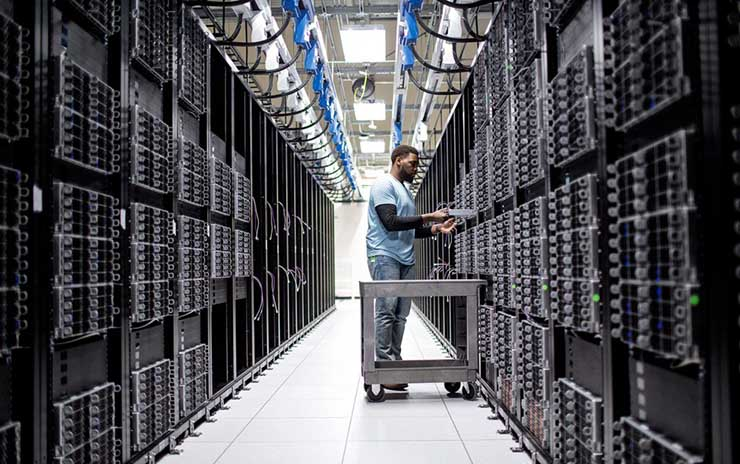Microsoft Mulling To Introduce Better Cooling For Data Centers

It is not only a big issue in summer temperatures: How can large data centers be cooled effectively and in a way that is as “resource-friendly” as possible? Microsoft is currently researching a new approach and is in a race with start-ups.
That comes from an interesting report from Bloomberg. According to this, various start-ups are competing with Microsoft to find better ways to cool data centers. “As we process a lot more data today, the chips are three, four, five times hotter,” explains David Craig, managing director of the British start-up Iceotope Technologies, which deals with cooling strategies for computers. In an interview with Bloomberg, he explained what a data center has to withstand today – for example, there are tons of videos, e-mails, bank statements, photos, shopping baskets, flight reservations and much more. This data is buzzing around on the Internet and has to be processed in the millions of data centers that are scattered across the globe. The data centers are now much more busy.
“Underwater Cloud”: Microsoft is ready for servers in the sea
Microsoft presented a solution to the heat problem a few years ago. The group sinks data centers in the sea. The flowing water ensures cooling without pollution and without electricity. David Craig’s start-up has a different solution for the heat: a liquid that washes around the cores of the processors to keep them at a relatively cool 50 degrees Celsius.
Microsoft currently operates more than 200 data centers worldwide. Systems are now being tested in which the servers are bathed directly in a hot liquid that does not conduct electricity. The company estimates that liquid cooling could make it possible to accommodate 10 times the computing power in the same space.
Various Techniques
At least a dozen smaller start-ups like the British Iceotope Technologies have joined the fight and are going very different ways. Iceotope has now found a potent partner in Lenovo, but the implementation is still at the beginning. The Spanish company Submer Technologies, on the other hand, sells sealed pods filled with servers, which are then bathed in a non-conductive liquid and connected directly to a network.
According to the company, the excess heat can then be used to heat nearby buildings (heating and water). The technology also extends the life of the computer as no dust reaches the processor.
Other companies, such as the Netherlands-based In-cooling, use a liquid that is first converted into a gas before being cooled back into a liquid and recycled to absorb heat. All these systems have one thing in common: they can provide more power in less space, and they can cool more efficiently and in a more environmentally friendly manner. Which technology will prevail remains exciting.
Project Natick Submarine Data Center
Digital marketing enthusiast and industry professional in Digital technologies, Technology News, Mobile phones, software, gadgets with vast experience in the tech industry, I have a keen interest in technology, News breaking.












